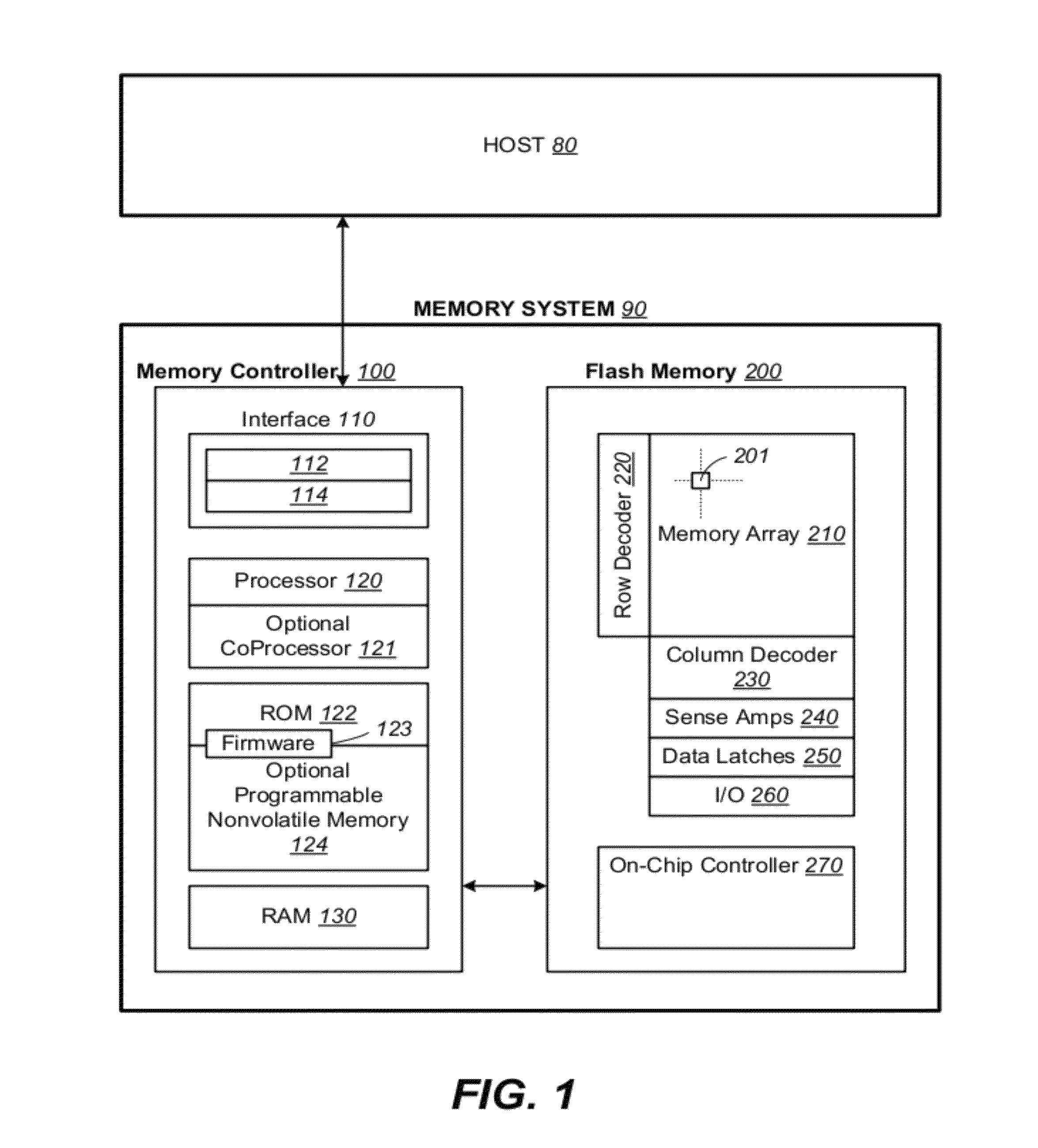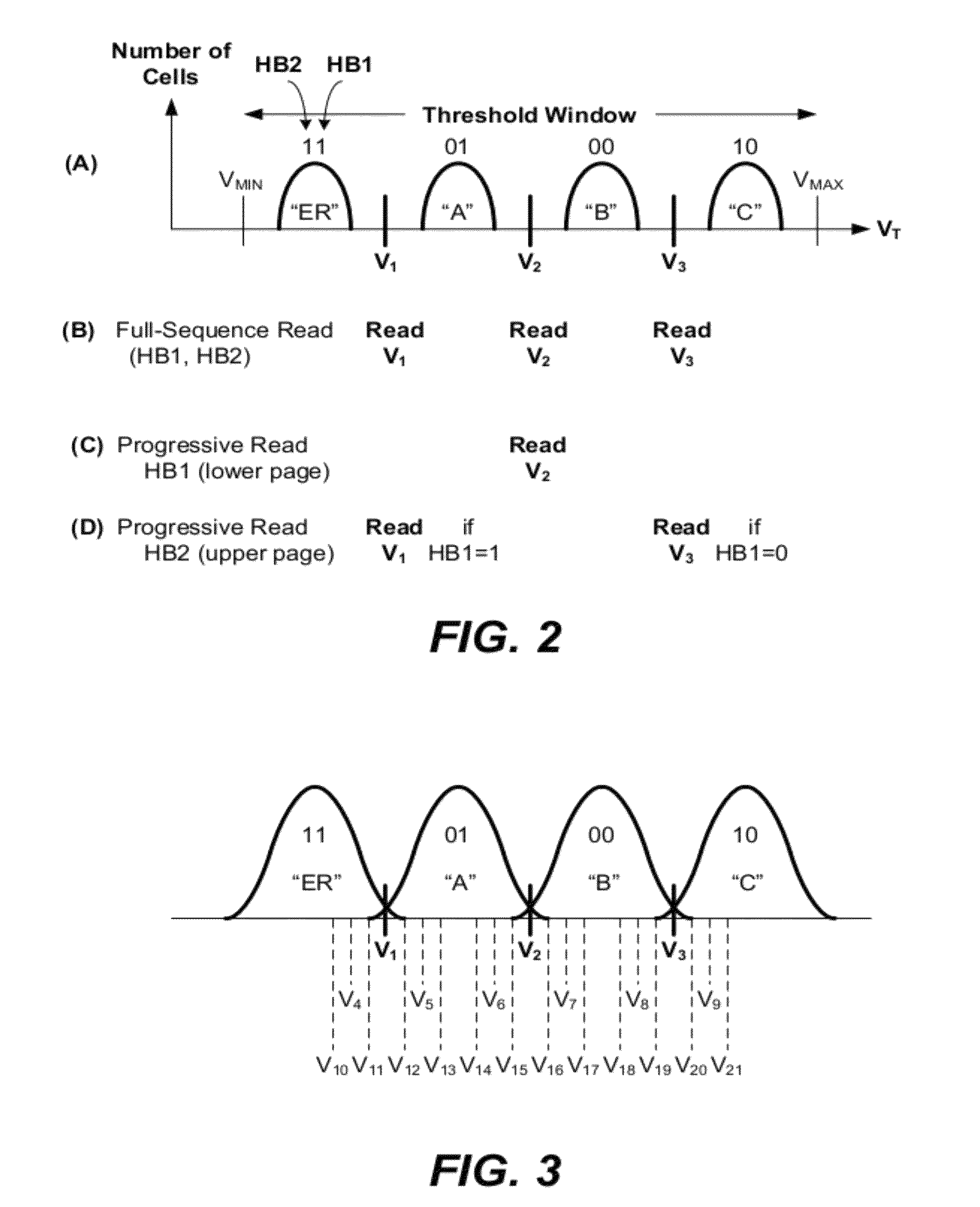Non-volatile memory and methods with asymmetric soft read points around hard read points
a non-volatile memory and hard read technology, applied in the field of storage of data in non-volatile memories, can solve the problems of unsuitable mobile and handheld environment, bulky disk drives, and easy mechanical failure, and achieve the effects of improving matching, reducing energy consumption, and increasing read speed
- Summary
- Abstract
- Description
- Claims
- Application Information
AI Technical Summary
Benefits of technology
Problems solved by technology
Method used
Image
Examples
Embodiment Construction
Memory System
[0052]FIG. 1 illustrates schematically the main hardware components of a memory system suitable for implementing the present invention. The memory system 90 typically operates with a host 80 through a host interface. The memory system is typically in the form of a memory card or an embedded memory system. The memory system 90 includes a memory 200 cooperating with a memory controller 100. The memory 200 comprises of one or more array 210 of non-volatile memory cells distributed over one or more integrated circuit chip. Each memory array 210 has the memory cells 201 arranged in rows and columns accessible by word lines and bit lines via a row decoder 220 and a column decoder 230 respectively. A group of sense amplifiers 240 allows a corresponding group of memory cells to be sensed via their bit lines in parallel. A corresponding group of data latches 250 cooperate with the group of sense amplifiers 240 to temporarily store data read from the memory or stage data to be wr...
PUM
 Login to View More
Login to View More Abstract
Description
Claims
Application Information
 Login to View More
Login to View More - R&D
- Intellectual Property
- Life Sciences
- Materials
- Tech Scout
- Unparalleled Data Quality
- Higher Quality Content
- 60% Fewer Hallucinations
Browse by: Latest US Patents, China's latest patents, Technical Efficacy Thesaurus, Application Domain, Technology Topic, Popular Technical Reports.
© 2025 PatSnap. All rights reserved.Legal|Privacy policy|Modern Slavery Act Transparency Statement|Sitemap|About US| Contact US: help@patsnap.com



